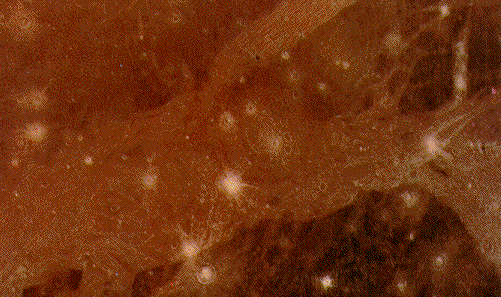Voyager's Preview of Galileo at Ganymede

Explanation:
NASA's robot spacecraft Galileo
began its long voyage to Jupiter in October of 1989.
In December of last year it arrived in the Jovian system, beginning
its unprecedented, detailed exploration
by dropping a probe
into the gas giant's atmosphere.
By early this morning it will have accomplished
another milestone in its ambitious mission.
Now in orbit around Jupiter,
Galileo will make its first close
flyby of
Ganymede,
Jupiter's (and the solar system's) largest moon
at 2:29 a.m. EDT.
As planned,
approaching to within 524 miles, it will make a series
of high resolution images of the surface which will reveal features
as small as 33 feet across.
This close-up color image from the Voyager 2 flyby in 1979
previews sights
Galileo will see in greater detail.
Showing features
as small as 3 miles across, it reveals a variety of terrain on
Ganymede's icy surface, including impact craters with bright rays
and long strips of light grooved structures suggesting large scale
motions of the frozen crust.
Galileo's flyby images will be stored onboard for playback
and should be available during the week of July 10.
Authors & editors:
Robert Nemiroff
(MTU) &
Jerry Bonnell
(USRA)
NASA Web Site Statements, Warnings,
and Disclaimers
NASA Official: Jay Norris.
Specific
rights apply.
A service of:
LHEA at
NASA /
GSFC
& Michigan Tech. U.

